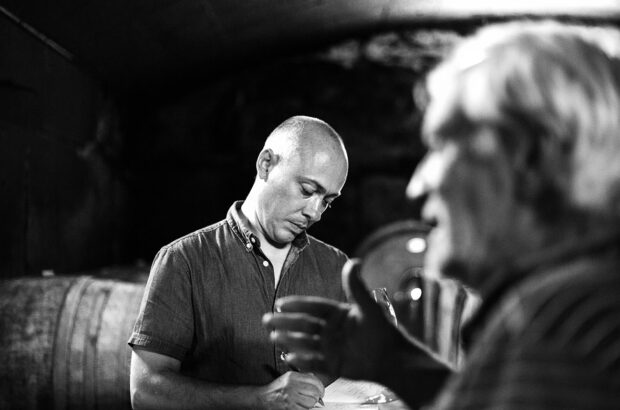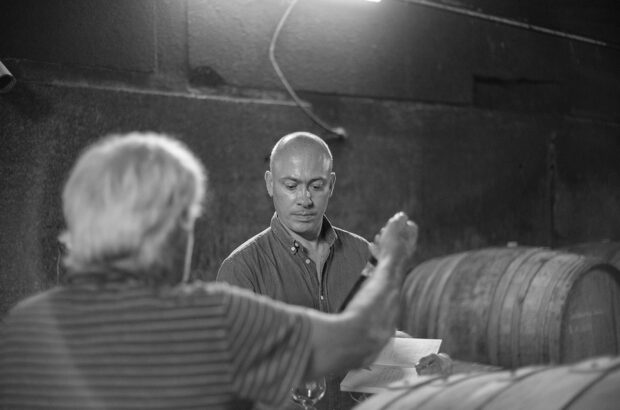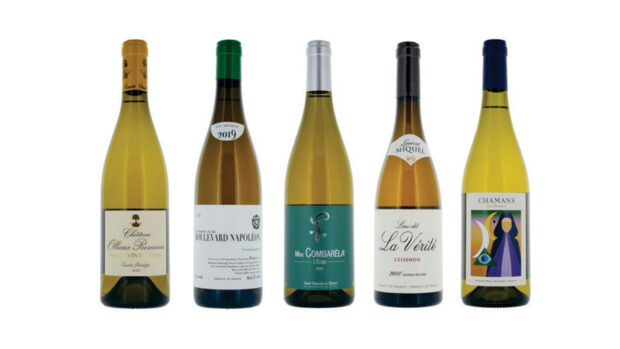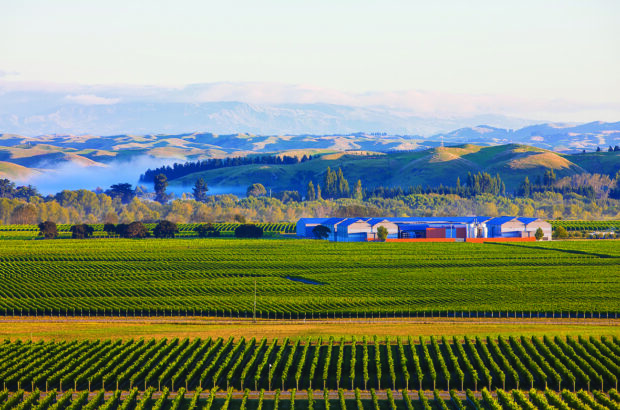History of British Port
Ask any British port baron why it is that Anglo-Saxon names dominate the port market, and he will tell you ‘port was developed by the Brits for the Brits’. There is an element of historical, if hysterical, truth in this claim. British entrepreneurs did find their way to northern Portugal and ultimately the Douro Valley during the 17th century when England was for ever at war with France. With Britannia ruling the waves and blockading the port of Bordeaux, the gentry were deprived of their favourite tipple, claret. But the harsh, tannic, as yet unfortified wines of the Douro were really no substitute for the more sophisticated fare from Bordeaux, and the British preference rapidly returned to the Médoc as soon as politics and their admirals allowed it to do so. Port, including Portuguese port, only became the fortified wine we know today in the mid-19th century, against the wishes of the famous British Baron Forrester, who was adamant that it should remain a table wine. Luckily, wiser counsels prevailed. The Baron was later killed in a boating accident, shooting the rapids at Cachão on the Douro. His companion Antonia Adelaide Ferreira floated to safety on her crinolin. Now a marriage of sorts has been consumated: Offley Forrester and Ferreira live under the Sogrape duvet.And, to those who hold a British-centric view of port, it will also come as a shock that today Britain is only the fifth largest of the world’s port markets. We consume about a million cases a year, but this represents just 10% of the total. We come a long way behind the French – who account for four bottles of every 10 sold – and the Dutch, Belgians and Portuguese themselves, who boast the highest per capita consumption (though the Danes run them a close second). Nor are the British the only foreign interlopers into the trade. With by far the biggest market for port, the French have also invested. Ramos-Pinto is owned by Champagne Roederer, Noval by Axa Millésimes and Gran Cruz by La Martiniquaise. Recently, though, Rozes, the one original French company in port, has been sold by Moët Hennessey to the Belgian Vranken. To complete the polyglot, C da Silva belongs to the mercurial Spaniard Joze-Maria Ruiz Mateos.
Porto Cruz
Cruz, now the second biggest exporter in the trade, is reputed to be the largest stockholder of all. Comfortably the brand-leader in France and Belgium, they are virtually unknown elsewhere. But ask for ‘un petit porto’ as an aperitif in a French bistro and it’s likely you will get a Porto Cruz.Portuguese companies are definitely alive and well, and giving their British and multinational colleagues a run for their money. But the indigenous producers have many concerns. Most Portuguese shippers are less interested in volume sales than in promoting top quality wines. The Douro is an expensive place to make wine. Labour is scarce, and wages are increasing above inflation to counteract the attractions of city life. Added to this there is a worry that a time may soon come when there is not enough high quality wine available – either for port, or the rapidly improving Douro table wines. Port producers already face competition from the owners of wine brands in the race to buy the best fruit at vintage time.Dr Antonio Filipe, president of the Port Exporters Association, is convinced that an integrated policy for all viticulture in the Douro is not only essential, but long overdue.Antonio Oliveira Besse of Ferreira/Offley, with a foot in both port and table wine camps, sees the need for more planting in the high quality areas of the Upper Douro towards the Spanish frontier. ‘The EU has granted Portugal the right to plant or replant 4,000 hectares, and the Douro must take its share in places that make the best wines, and where modern methods of viticulture can be introduced,’ he says. ‘People are ready to spend much more on quality wine than they were 10 years ago. We have a duty to give them what they want.’It is a view echoed by João Nicolau d’Almeida of Ramos-Pinto, who has been at the forefront of technical innovation in the Douro. Ramos-Pinto was founded in 1890 by the ex-financial director of Sandeman, who saw a commercial opportunity in Brasil, which at that time was the biggest market after Britain. The brand launched with a series of erotic belle époque posters, and has never looked back. Brasil is still its biggest market.
But D’Almeida likes to leave sales and marketing to others in order to concentrate on the planning of his vineyards, and above all blending. Tawnies are his passion. ‘My father, who was the winemaker for Ferreira, always said that vintage port is wine; tawny port is “portwine”’, he told me. ‘The aged tawnies – the 10-and 20-year old wines – are the true test of a blender’s art. Nowadays, we plant special grape varieties that are earmarked for tawny. Not only are the varieties themselves carefully selected, but the position in the vineyard where they are planted. Port is not a business for tomorrow. It takes time and dedication. It is why we need more research, and why we must have more vineyards in the best possible places – irrespective of the lower yields that this will entail.’
This may not be as easy as it sounds. Planting is still administered by the Casa de Douro, a kind of farmers’ quango, whose power-base is in the Baixo Corgo around the town of Regua, a region that, generally, produces quantity over quality. The Casa has intimated that there is no need for further vineyards in the Douro, but as this in no way reflects the view of the exporters it is unlikely to be the last we have heard on this issue.
A similar company to Ramos-Pinto in size and emphasis on quality is the Quinta do Noval, though its success in Britain and America has been for vintage port and LBV rather than tawny. Its reputation was made by declaring the 1931 vintage when only Warre and Martinez of the well-known vintage houses also offered the year. The world was in recession and nobody was in the mood to lay down vintage port, or anything else.
Noval has two hectares of vineyard set aside for ungrafted vines, from which it makes Nacional. The 1931 Noval Nacional appears on countless wine buffs’ selections of the greatest wines of all time. Noval vintages come only from the eponymous quinta.
Noval’s Christian Seely likes the house’s slightly eccentric tradition of declaring vintages when it feels like it – rather than following the herd. ‘The 1962 and 1967 were wonderful wines from years that were not generally declared,’ he said. ‘On the other hand, we did not declare the 1977 when we should have, and went for the 1978 instead, which was, frankly, not the greatest Noval.’But Seely is pleased with his recent declarations. The 1994 Nacional got a 100 point rating in the Wine Spectator, and Robert Parker gave the same for the 1997. Seely’s and Noval’s reputations, at least among impressionable Americans, are assured.
Seely and Noval
One of the first things Seely did on arrival in Portugal was to marry the daughter of Joaquim Manuel Cálem. Blood being thicker than water, when he sold the business but kept his Douro properties, it was logical for him to supply his excellent quinta wine to Noval rather than Cálem. That this has not phased Cálem’s present owner, Rogerio da Silva, is testament to the latter’s spirit. The company was loss-making when he acquired it two years ago, but by good husbandry and a healthier proportion of quality wines in the sales mix, da Silva tells me they are now trading at a profit once again. Cálem is the leading port in Denmark and number three after Ferreira and Offley in Portugal. They also have a long-standing relationship with the British off-licence chain, Unwins.Another Portuguese company to switch its policy from mass-market to quality is the Royal Oporto Company. One of the biggest land-owners in the Douro, it has been systematically upgrading its quintas, so that it is now able to source most of its requirements from its own vines. Marketing director Pedro da Silva Reis thinks that port is being sold too cheaply. He, more than most, sees the potential conflict between port and table wine. His company is already a major player in the Douro and he intends to see this continue and grow. He is ready to see a shift in emphasis away from every-day styles of port to table wine. ‘Port has a minimum age of three years, and most is much older than that,’ he points out. ‘That takes an awful lot of financing. The turnover of a table wine is quicker and can be more profitable. But it has to be great wine – it cannot afford to be mediocre.’
Selling to Britain
Barros Almeida is also looking to sell quality not quantity. Manuel-Angelo Barros sees a dichotomy between the commodity markets of continental Europe and the more quality-conscious British and North Americans. And one must not forget the Portuguese. As much vintage port – much of it mature wine over 10 years old – was sold in Portugal last year as in Britain – and that at a time when shippers there were selling the newly declared 1997 vintage. The Barros Almeida Group owns Kopke, the oldest firm in Vila Nova de Gaia dating from 1632, which Manuel-Angelo calls the jewel in his crown, having achieved an enviable reputation for colheitas – single-dated tawnies.
Non-British companies, with the exception of Noval, find the British market hard going. It is difficult for them to find people to distribute their brands. But the big (Ferreira, Cruz, Royal Oporto, Barros, Cálem), to the not-so-big (Poças, Ramos-Pinto, C da Silva, Noval), to the ’boutique’ firms (Niepoort, Burmester, Krohn, Andresen), all have their strengths. They are singing from the same hymn-sheet. They want to sell more quality, less quantity, and make better wine at bigger properties using modern methods of oenology and viticulture.Ramos-Pinto’s pride and joy is the 200-hectare Quinta da Ervamoira, near Foz-Cõa in the far eastern part of the Upper Douro. In 1991, the government started to dam the Cõa River, which meant that the quinta would be flooded. Four years later, with the project nearly completed, d’Almeida said on television that only a miracle could save the property. Two weeks later, the excavators found a series of pre-historic paintings from 2000 BC showing the development of man, and reckoned to be as important as any in the world. Work on the dam stopped. The miracle had happened. D’Almeida built a museum as a shrine, where he holds thanksgiving concerts. So, for only the second time in history, Ervamoira has turned water into wine.











